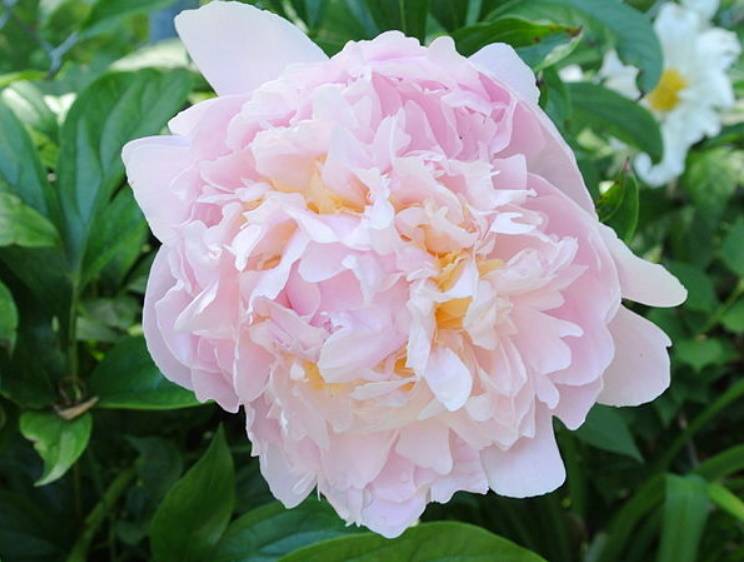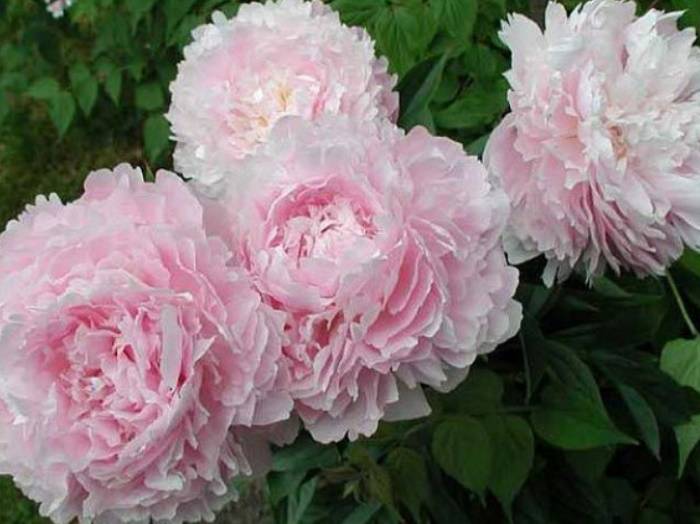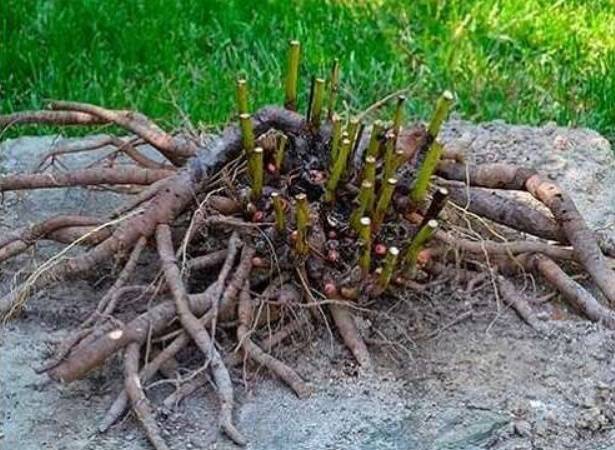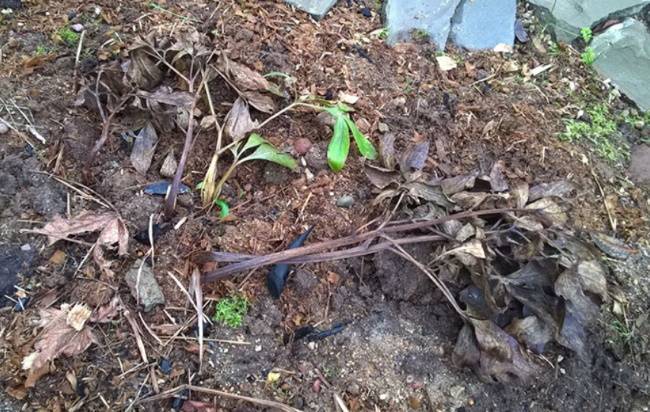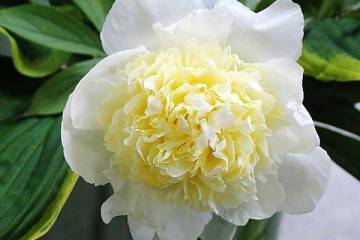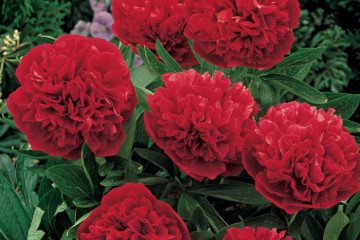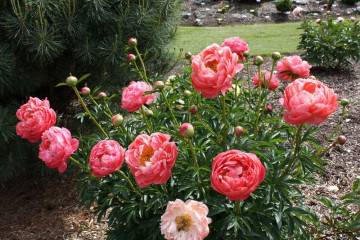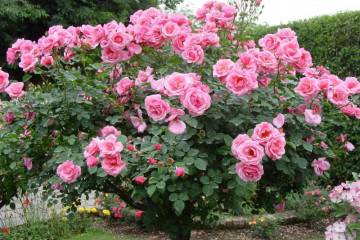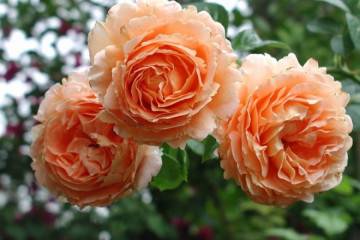Peony Pillow Talk (Paeonia Pillow Talk) - features of the flower
Content:
Once peonies were famous not so much for their beauty as for their magical properties. It was believed that a flower planted in a garden or placed in a vase would attract happiness to the house, and people have been using the medicinal properties of peonies since the time of Avicenna - he advised wearing the root of the flower around the neck. In the modern world, the main value of these plants is their excellent decorative qualities, which have improved significantly over centuries of breeding work. As a result, such a handsome man as the Paeonia Pillow Talk peony appeared in the Paeonia genus.
Peony Pillow Tok: history, description
Modern peony hybrids and varieties are the result of the inspired work of thousands of gardeners around the world. Work on the creation of new species of these plants stretched for millennia and began in ancient China and Japan. In the Far East, wild species of Paeonia grew on the slopes of the mountains, then they migrated to the gardens of wealthy people, where they were engaged in breeding with great zeal.
Paeonia Pillow Talk was registered in the American Peony Society (APS) in 1973, and created by the efforts of the American flower nursery Klehm Charles & Son (Charles Clem and son). The nursery was founded in 1862 by the ancestor of the company's owners, D.A.Klem. After Charles Clem visited the Chicago World's Fair (1893), dedicated to the 400th anniversary of the discovery of the United States, and saw the cultivar Paeonia Crousse in the exhibition about the achievements of horticulture, the nursery began work on the creation of new species of peonies.
Appearance of Paeonia Pillow Talk cultivar
From English, the name of the Pillow Talk variety is translated as "intimate conversation". Indeed, delicate pink with a pearlescent shine, slightly curled petals of blossoming terry buds and their aroma evoke a romantic mood and the need to meet a loved one. The Pillow Talk bouquet of cut peonies presented to him will stand in a vase for a long time without crumbling and exude a delicate smell.
Growing in the bright sun, the Pillow peony, belonging to the group of lactic-flowered herbaceous Paeonia, forms very large pink-shaped inflorescences with a diameter of 17 to 25 cm. Flowering begins in May and lasts about 3 weeks. The outer petals on half-open buds are painted in a creamy pink shade, the crown is light pink, a high rosette is formed in the center.
Pillowtalk bushes grow up to 80 cm. The plant has erect, dense stems with moderate branching, covered with semi-glossy dissected leaves of light and medium green color. Flowers look very beautiful against the background of ornamental shrubs or conifers, along garden paths, in single and group plantings.
The beauty of Paeonia Pillow Talk has been appreciated by professional flower growers. In 1994, the creators of the variety were awarded the American Peony Society Gold Medal.
Growing a flower
Growing peonies is possible in several ways. One of them is the division of a bush that has reached the age of 3-4 years into root cuttings.
The root system of herbaceous peonies consists of 3 types of roots:
- suction - small white, which provide the plant with water and nutrition;
- adventitious - long, growing in spring at the beginning of vegetative growth;
- tuberous - brown thick, storing nutrients.
From spring until the end of the flowering period, the main work falls on the adventitious roots, which draw nutrients from the soil and transfer them to the aboveground part of the bush. After flowering, they begin to thicken, tubers grow on them. All work on drawing water from the soil during this period is done by actively growing suction roots.
Site selection and preparation of the landing pit
In order for the Pillow Talk peony to be decorated with bright inflorescences with all pink petals during flowering, it must grow in a sunny place, protected from wind and drafts. You should not choose areas near the walls of the house and close to bushes and trees. The composition of the soil can be different, but it should be borne in mind that:
- when planting rhizomes in sandy soil, a bush with thin stems and small leaves will grow. The inflorescences will also be medium-sized, but there will be a lot of them;
- on clay soil, plants will grow slowly, but the flowers will be very large.
The best option would be to choose a well-drained piece of land with loamy fertilized soil. The planting hole should have a depth and width of about 50 cm. The root cutting is laid out in it at an angle and sprinkled with earth.
Seed planting
Reproduction of peonies by seeds is done only if they do not seek to get new plants that are absolutely identical to the parent.
In August, seeds are planted in flower pots filled with fertile soil with neutral acidity. The depth of planting in the ground is 5 cm. It is better to use a ready-made substrate purchased at a flower shop for this purpose. The pots are buried in a flower garden in the open field and left in this form for the winter. Before the onset of cold weather, cover with agrofibre and fallen leaves.
In the spring, the insulation is removed and the germination of seeds is checked. Sprouted seedlings are transplanted into separate flower pots and they are cared for throughout the summer season: they are watered after the upper part of the soil dries up, they are fed 2-3 times with complex mineral fertilizers. In early autumn, the strongest seedlings are transplanted to a permanent growing site.
Peony care
After planting, peonies first of all begin to build up the root system. To do this, they need constantly moistened soil, so during this period it is important to prevent it from drying out. How often to water during this period should be decided based on actual weather conditions. If the autumn rains do not charge, then you need to water the plants every 2-3 days. If, after watering, the soil begins to sag and the roots become bare, you will have to fill up the layer of earth to the previous level.
After transplanting into fertile soil, the plants do not need feeding. The first feeding is carried out the next year during the period of active growth of the stem mass. Use natural organic fertilizers (a weak solution of liquid mullein) or mineral complexes with a predominance of nitrogen. In subsequent years, peonies are fertilized in the spring with nitrogen complexes, in the summer with potassium-phosphorus complexes, and in the fall with superphosphate.
Pillow Talk peony care during flowering
The blossoming Paeonia Pillow Talk inflorescences look great in bouquets. If the peony bush is grown for cutting, then during the period of bud formation, the bushes are regularly examined and the side branches with bud ovaries are cut off. In this case, the flowers formed on the central stems will be very large and lush.If the plant is grown to decorate a flower garden, then fading inflorescences are regularly removed.
During the flowering period, the roots of peonies need a large amount of moisture. Watering is carried out not often, every 7 days, at least a bucket of water is poured under each flowering bush. After the soil dries up, the root zone is carefully loosened, being careful not to damage the upper part of the roots.
Disease and pest control
For the prevention of root rot, powdery mildew in the spring during the growth of leaves, the root zone and young stems are treated with solutions of phytosporin, alirin, trichodermin, gamair. If ants and aphids begin to appear on the buds that have begun to form, systemic insecticides are used, such as confidor, aktara, decis.
Preparation for wintering
Pre-winter pruning of peony bushes begins after the stems change color, first to yellow, and then to dark brown - black. It must be done before the beginning of the autumn rains period. After pruning, petioles about 3 cm high should remain on the soil surface. All plant residues must be removed from the flower garden.
Before the onset of frost, peony bushes are sprinkled with a thin layer of last year's rotted manure and deciduous mulch from their own garden to be sure that there are no pathogens on the fallen leaves.
In the spring, during the active melting of snow, the insulation from the bushes must be removed. Flowers will begin to wake up after daylight hours lengthen and night air temperatures become positive.
The spring awakening of peonies is the beginning of active work in the flower garden. But gardeners are looking forward to this moment, because then a luxurious bush with beautiful flowers will appear in the garden, bringing a romantic mood.
